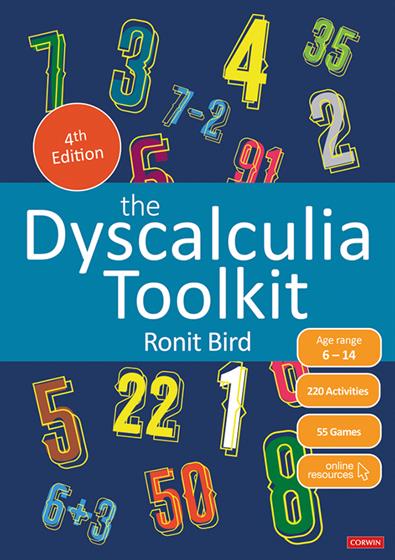Introduction
Section I: Early Number Work with Numbers Up to 10
Overview
What are the main problems?
Activity – Make dot patterns for the numbers 1 to 10
Activity – Focus on key component facts
Activity – Make transparent dot pattern cards for the numbers 1 to 5
Game – Make 5
Activity – Explore smaller numbers inside larger numbers
Game – Numbers Inside
Activity – Change one dot pattern into another
Activity – Change dot patterns by adding or subtracting
Activity – Use dot patterns to explore the idea of odd and even
Game – Collect 5s
Game – Key Components Guessing Game
Activity – Sort and re-sort a set of dominoes
Activity – Connect subtraction to addition
Activity – Regroup: Apply logic to find new component facts from given facts
Activities – Become familiar with Cuisenaire rods
Activity – Explore odd and even with Cuisenaire rods and with money
Game – Odd and Even Collectors
Game – Draw Your Race on a Number Line
Activities – Use Cuisenaire rods to learn all components of the numbers 1–10
Activity – Make a ‘Story’ of a number
Game – Race to Tell a Story
Activity – Make and read equations with Cuisenaire rods
Activity – Draw and record equations informally
Game – Key Facts Triad Game
Game – Post-It Note Subtraction
Activities – Record equations in writing
Activity – Make up word problems to match a given number fact
Game – Cover the Numbers, or Shut the Box
Game – Clear the Deck
Activity – Make a bead string, in two colours, of 10 beads
Activities – Learn complements of 10 with the bead string
Game – How Many Beads? How Many Are Hidden?
Activity – Find complements of 10 with Cuisenaire rods
Game – Complements Number Search
Game – Complements Ping-Pong
Game – Ten in a Bed
Activities – Explore and learn the doubles up to 5 plus 5
Activities – Estimate and measure using Cuisenaire rods
Activities – Focus on plus/minus 1 and plus/minus 2
Game – Who Has the Most Equations?
Game – Domino Tens
Activity – Compare the difference and equalise
Activities – Hidden quantity subtraction
Activity – Teach complementary addition
Activity – Complementary addition on a number line
Activity – Make up word problems about missing numbers
Activity – Use reasoning to find near-complements and near-doubles
Activity – Identify the best strategy for different situations
Activities – Use money for component work
SECTION 2: Basic Calculation with Numbers Above 10
Overview
What are the main problems?
How to help
Activity – Connect the numbers 10–20 with the numbers below 10
Game – Polka Dots
Game – Regroup
Activities – Focus on the ‘teen’ numbers
Activities – Explore the numbers between 10 and 20 with Cuisenaire rods
Activity – Learn the doubles up to 10 plus 10
Game – Double Take
Game – It All Adds Up
Activities – Locate 2-digit numbers and put them in context
Activities – Complements to 20
Activity – Complements to larger multiples of 10
Activity – Complements on a number line
Activity – Introduce bridging through 10 with Cuisenaire rods
Game – Five and What’s Left
Activity – Bridge through 10 on a number line
Activity – Practise bridging and reinforce the commutativity of addition
Game – Frame an Addition
Activity – Bridge through multiples of 10 on a number line
Game – Race Along a Number Line and Bridge
Game – Race to the End of the Number Line
Activity – Complementary addition, or subtraction by adding
Game – Frame a Subtraction
Activity – Complementary addition for subtracting round numbers
Activity – Harder complementary addition on a number line
Activities – Complements to 100
Game – Keep the Change!
Activities – Practise and extend the doubles facts
Activity – Halving is the opposite of doubling
Activity – Find half of round numbers
Activity – Function machines for doubling and halving
Activity – Use reasoning to find near-complements and near-doubles
Activity – 9 is almost 10
Activity – The Basic 8 strategies
Activity – Identify which strategy works best in different situations
Game – Subtraction Equations
Activity – A flexible approach to partitioning
Activities – Explore partitioning methods for 2-digit mental additions
Activity – Teach an expanded written method for column addition
Activity – Avoid decomposition in subtraction
SECTION 3: Place Value
Overview
A note about the threefold nature of the column labelling system
What are the main problems?
How to help
Activities – Exchange units into tens
Activities – Concrete counting on place value mats
Game – Magic 10s
Activities – Make a 20-step staircase and explore the ‘teen’ number names
Activity – Cover 20
Game – Race to Cover 100
Game – Four Throws to Reach 100
Activities – Make and read numbers made of Cuisenaire rods or base-10 materials
Games – Dice and spinner games
Activities – Practise subtraction and decomposition with concrete materials
Game – Spot the Decomposition
Activities – Use a spike abacus
Game – Win Counters on a 100-Square
Game – Race through a 100-Square
Activities – Practise adding and subtracting 10 and 100
Game – Steer the Number
Activity – Transform a 2-digit number in two steps
Activity – Teach the threefold repeating pattern: units, tens and hundreds
Activities – Explore place value as a shorthand
Activities – Read and write multi-digit numbers
Activities – Build up large numbers, one column at a time
Activity – What is the value of …?
Game – Two-Digit Sequences
Game – Three-Digit Sequences (Focus on Tens)
Game – Place Value Boxes
Game – Calculator Skittles
Activity – Partition numbers into tens and units in various ways
Activity – Split off the ‘teen’ numbers
Game – Jump 10
Activities – Locate any number on a number line
Activity – Round up or down
Game – The Six-Card Rounding Game
Game – The Rounding Challenge
Activity – Teach x 10 and divded by 10 as a shift between columns
Activity – Extend place value thinking to decimals
Activity – Connect decimal place value notation to money
Game – Rounding Races
SECTION 4: Times Tables, Multiplication and Division
Overview
What are the main problems?
How to help
Activities – Build small numbers out of equal-sized groups
Activity – Connect division to multiplication from the very beginning
Activity – Illustrate simple word problems
Activity – Use Cuisenaire rods to show that multiplication is commutative
Activities – Use Cuisenaire rods to connect multiplication and division
Activity – Diagrammatic recording of multiplication and division
Activity – Connect step-counting and repeated addition with times tables
Activity – Practise mental step-counting from given tables facts
Activities – Make times tables patterns on a 100-square
Activities – Make times tables patterns on number lines
Activities – Key fact: Double means ‘multiply by 2’
Activity – Key facts: x5 is half of x10
Activity – How many 10s? So, twice as many 5s
Activity – Key facts division practice
Activity – x9 is almost x10
Game – Don’t Walk if You Can Take the Bus
Activity – Find all the steps of any times table by reasoning from key facts
Activity – Practise all the steps of any times table by reasoning from key facts
Activity – Find division facts by reasoning from key facts
Game – Mouse Tables
Activity – Construct a multiplication grid
Activity – Complete a partially filled multiplication grid
Games using self-correcting cards to practise individual times tables
Game – Multiples from the 1–6 Times Tables
Activity – Harder mixed tables practice
Game – Products in a Row
Game – Factors
Activities – Change the shape of the multiplication rectangle
Game – Areas on a Grid
Activity – Use rectangle sketches to help derive new multiplication facts
Activity – Use rods to explore short division
Activity – Teach an expanded written notation for short division
Activity – Use rectangle sketches to support short division
Activity – Compare division sketches to multiplication sketches
Activity – Teach the divisibility rules
Game – Divisibility Rules
Activity – Boxes for long multiplication
Recommended Books and Resources
Appendix: Introduction to Concrete Manipulative Materials


